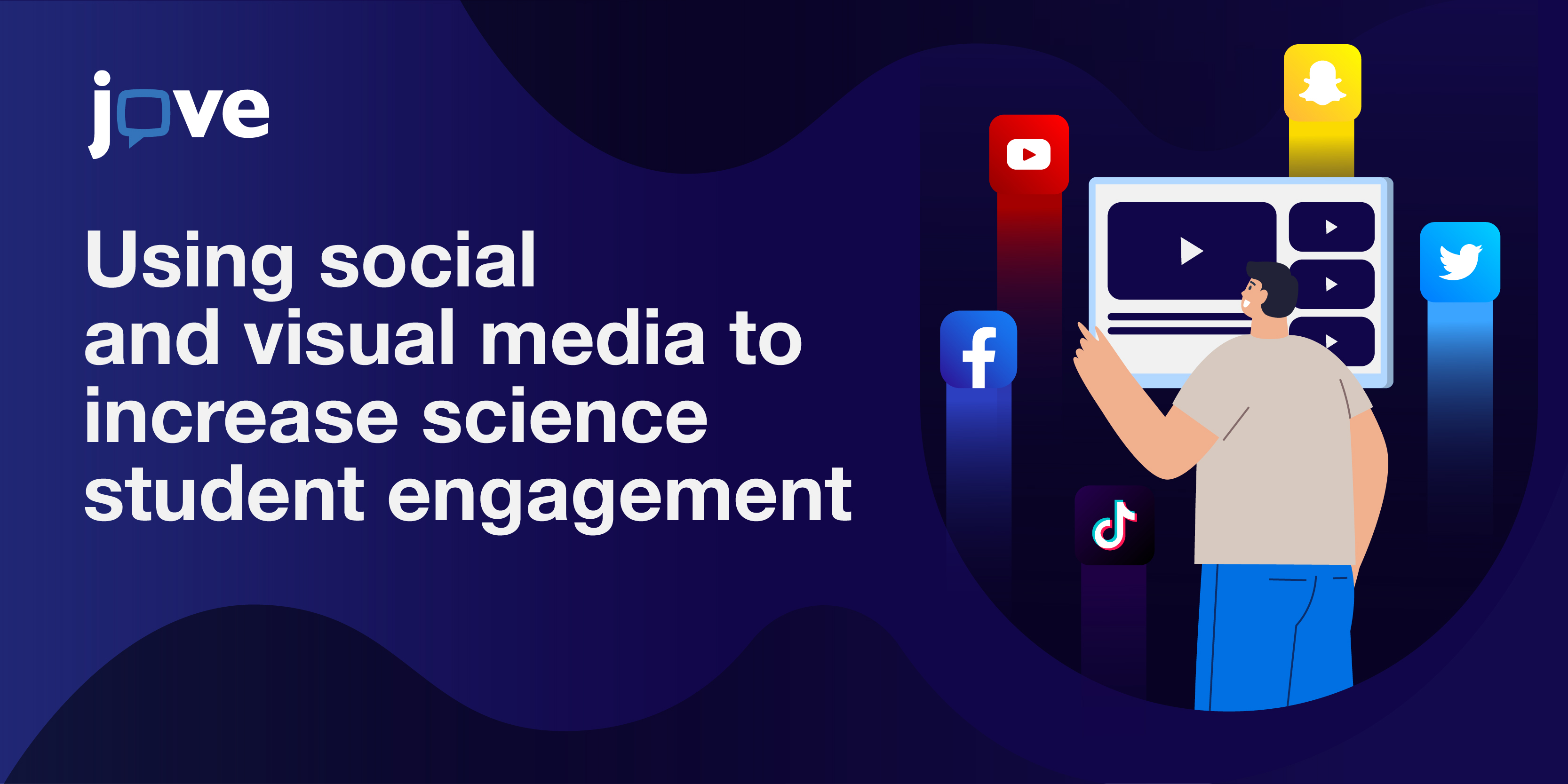STEM educators are facing a new teaching world. The recent increase in remote learning has forced educators to think outside the box regarding teaching methods.
Spearheading these changes are Dr. Glenn Hurst, a chemistry professor at the University of York, and Dr. Katie Lamb, a Research Associate at the University of Sheffield. Dr. Hurst and Dr. Lamb have broken the mold of classroom learning, and we're here today to share their top tips.
.png)

This blog post highlights takeaways from our recent webinar on Dr. Hurst and Dr. Lamb's innovative approach to using social and visual media-based learning tools that boost student engagement. We will discuss the different social media platforms you can use, including ideas for various video-based assessments, and share hints & tips to keep learning fun.
Social Media As a Learning Tool
In a recent Twitter poll by JoVE, 50% of STEM educators feel that student engagement is the biggest teaching challenge of 2023. This is closely followed by low student performance at 27.3% and capturing different learning styles at 13.6%.
What if we told you you could cover all these bases with the right social media-based learning strategy? Read on to learn more.
Snapchat
Utilizing Snapchat to contextualize scientific theories will help students engage with their learning.
For example, Dr. Hurst set up a Snapchat account to communicate with his students. He would post stories contextualizing the chemistry of the world around them.
Dr. Hurst would post stories rooted in classroom learning, explaining everything from what chemicals make daffodils yellow to the structure of the polymers that make up golf balls.
This tool helps students feel more engaged with their learning. 50% of students polled strongly agree that they feel more engaged with chemistry because of Snapchat. In addition, 80% of the same students either agree or strongly agree that Snapchat is a useful tool that helps them contextualize their knowledge of chemistry!
Top tip: Consider your platform. Engaging students with photo-messaging tools is a great way to support students with the more visual aspect of STEM learning.
Snapchat is a great mobile & web-based platform for quick photos or videos. However, some social media are only available on browsers. Determine which tool is best based on your teaching method & student needs.
Twitter
Twitter is an excellent platform for meeting like-minded people and students. The hashtag feature makes it easy to find similar topics, and it's easy to find accounts that may be relevant to your students using the search feature.
Dr. Hurst utilizes Twitter as a teaching aid by delivering a lecture and then asking students to create a poster or infographic based on that lecture.
Posters and infographics are a great way to help students pull critical points out of material, boost students' creativity, and spark intelligent questions. Dr. Hurst found that students would create their own Twitter accounts and subsequently post their work to their profiles to inform the public about scientific topics.
Top tip: Encourage students' creative side. Breaking up a STEM student's busy timetable with creative breaks can boost learning overall.
TikTok
A few years ago, TikTok was considered an emerging app.
Now, it is in the top 10 most downloaded apps of all time.
It is an engaging, visual tool where users create short videos using music, animated gifts, and captioning tools. This is a great way to engage with younger students.
Two of their students created short, engaging educational videos that received hundreds of likes. These videos contextualized the chemistry of everyday life and helped students apply their classroom learning to real-life scenarios.
They surveyed a combination of their students and the general public to understand their students’ social media success. Of 29 survey participants, 96.5% strongly agreed they had learned something new from the TikTok videos. In addition, 96.5% felt inspired to recreate the experiments at home, and 82.7% agreed that their interest in chemistry had increased after watching these TikToks.
Top tip: Be reactive. While TikTok is a popular platform now, a few years ago, it was an emerging app. You need to be reactive and adapt to new social media as they come out. Engage with students to find out what platforms they're using and use them to your advantage!
Intrigued?


